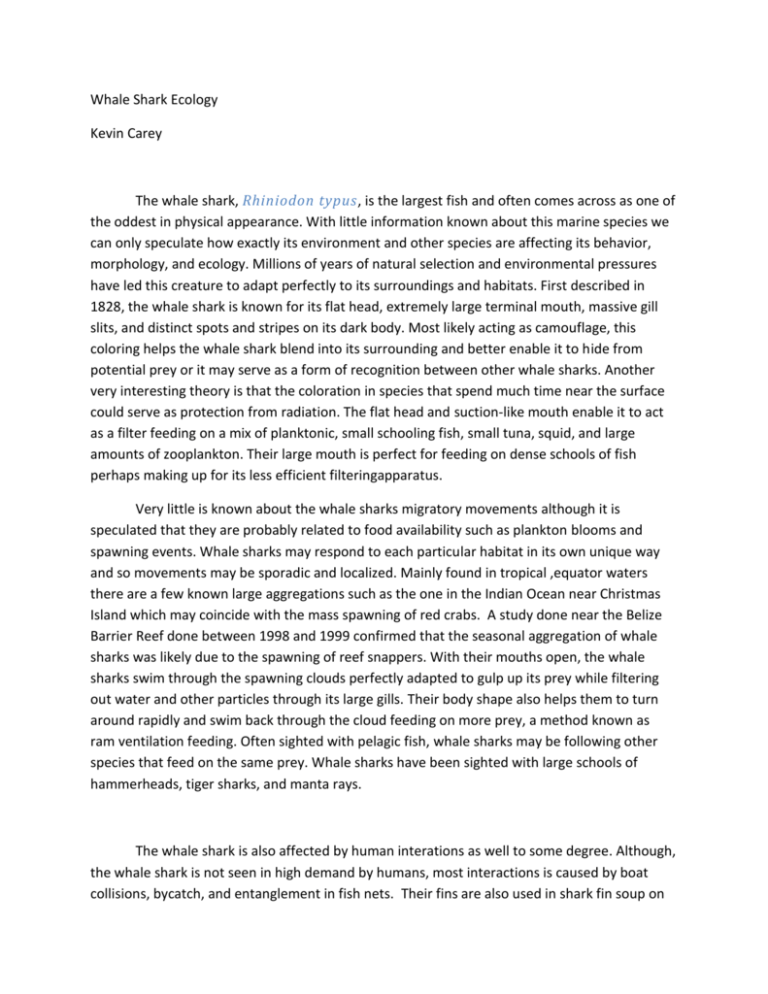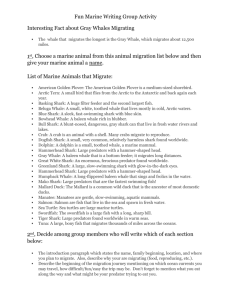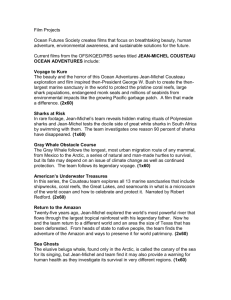carey2
advertisement

Whale Shark Ecology Kevin Carey The whale shark, Rhiniodon typus, is the largest fish and often comes across as one of the oddest in physical appearance. With little information known about this marine species we can only speculate how exactly its environment and other species are affecting its behavior, morphology, and ecology. Millions of years of natural selection and environmental pressures have led this creature to adapt perfectly to its surroundings and habitats. First described in 1828, the whale shark is known for its flat head, extremely large terminal mouth, massive gill slits, and distinct spots and stripes on its dark body. Most likely acting as camouflage, this coloring helps the whale shark blend into its surrounding and better enable it to hide from potential prey or it may serve as a form of recognition between other whale sharks. Another very interesting theory is that the coloration in species that spend much time near the surface could serve as protection from radiation. The flat head and suction-like mouth enable it to act as a filter feeding on a mix of planktonic, small schooling fish, small tuna, squid, and large amounts of zooplankton. Their large mouth is perfect for feeding on dense schools of fish perhaps making up for its less efficient filteringapparatus. Very little is known about the whale sharks migratory movements although it is speculated that they are probably related to food availability such as plankton blooms and spawning events. Whale sharks may respond to each particular habitat in its own unique way and so movements may be sporadic and localized. Mainly found in tropical ,equator waters there are a few known large aggregations such as the one in the Indian Ocean near Christmas Island which may coincide with the mass spawning of red crabs. A study done near the Belize Barrier Reef done between 1998 and 1999 confirmed that the seasonal aggregation of whale sharks was likely due to the spawning of reef snappers. With their mouths open, the whale sharks swim through the spawning clouds perfectly adapted to gulp up its prey while filtering out water and other particles through its large gills. Their body shape also helps them to turn around rapidly and swim back through the cloud feeding on more prey, a method known as ram ventilation feeding. Often sighted with pelagic fish, whale sharks may be following other species that feed on the same prey. Whale sharks have been sighted with large schools of hammerheads, tiger sharks, and manta rays. The whale shark is also affected by human interations as well to some degree. Although, the whale shark is not seen in high demand by humans, most interactions is caused by boat collisions, bycatch, and entanglement in fish nets. Their fins are also used in shark fin soup on some Asian countries. Figures and exact numbers of abundance are still very unclear although there is a defined need for on-going studies with clear objectives in the future to help conserve this wonderful species. Citations: Heymn, William D., Graham, Rachel D., Kajerive, Kjorn, Johannes, Robert E. 2001. Whale sharks Rhincodon typus aggregate to feed on fish spawn in Belize. Marine ecology Progress Series. 215: 275282. Colman, J.G. 1997. A review of the biology and ecology of the whale shark. Journal of Fish Biology. 51: 1219-1234.











